Come checkout the world of Betta Halfmoons, known for their dramatic tail spread, stunning colors, and bold personality. We will share care tips, feeding habits, tank setup ideas, and much more.
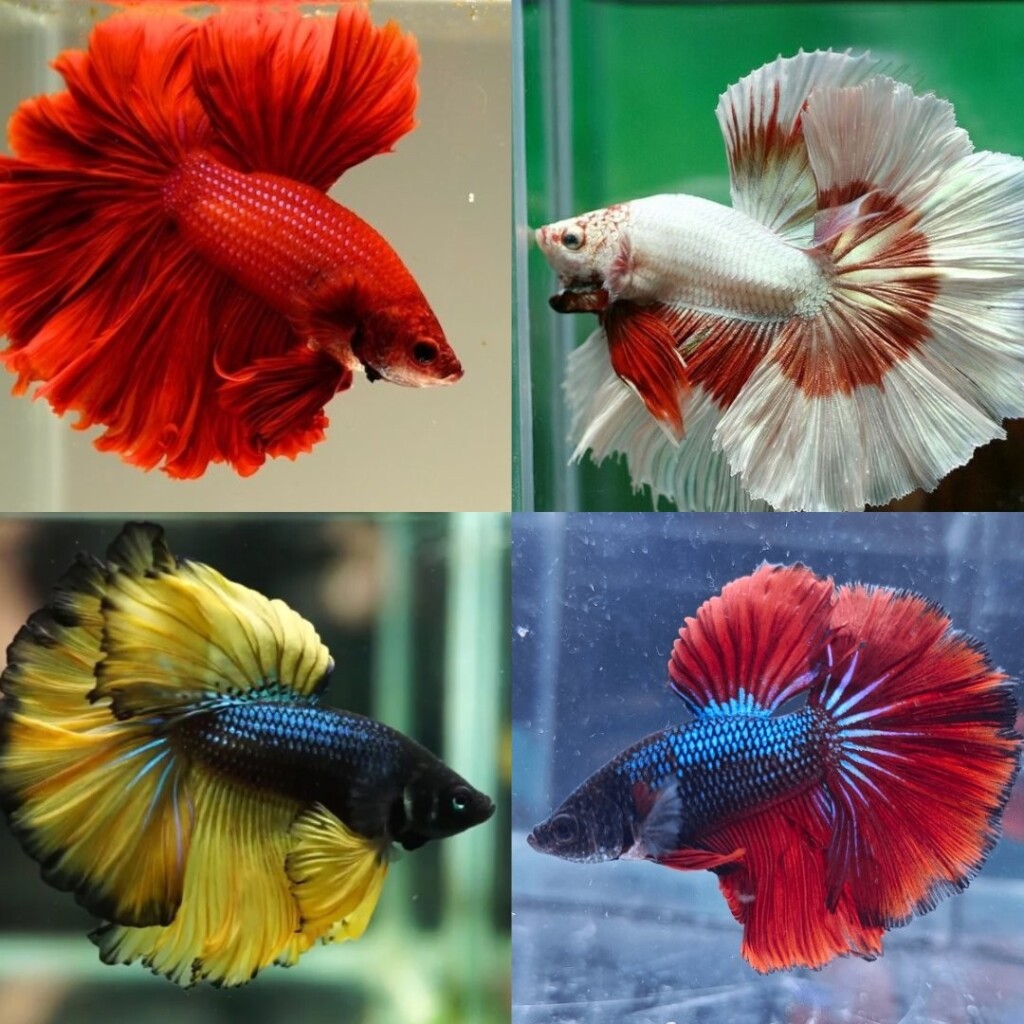
Introducing The Halfmoon Betta
There are only a few freshwater fish that turn heads like Betta Halfmoons – with its bold colors and a tail that flares up to 180 degrees, this fish looks more like a piece of underwater art than a pet. From beginner tanks to competitive Betta shows, the Halfmoon is a standout. But don’t get carried away by their flowing fins; this beautiful fish has a bold personality to match.
This Betta splendens Halfmoon introduction covers everything you need to know, from tank setup to behavior, diet, and health tips. Whether you’re new to fishkeeping or brushing up on Halfmoon Betta fish basics, this guide will walk you through what makes these fish so special and how to keep them thriving.
If you’re drawn to colorful centerpiece fish with tons of personality, keep reading this Betta Halfmoon overview, because this freshwater fish might just be your perfect match.
Author’s Note: Check out our post on the The Top 10 Most Popular Betta Fish for even more beautiful Betta varieties!
Natural Background: From Wild Origins to Aquarium Royalty
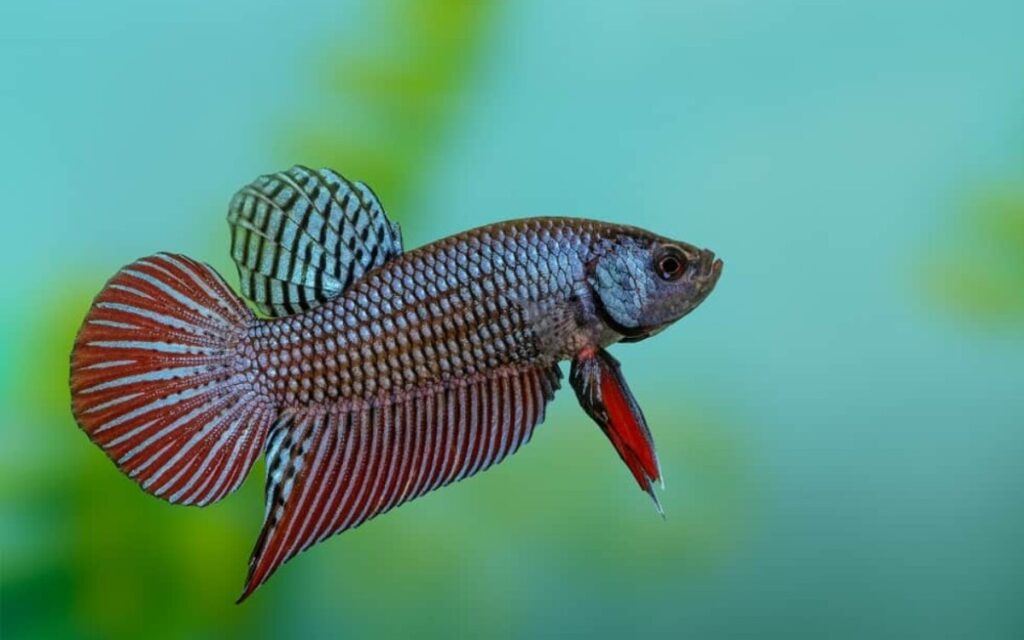
Today, Halfmoons are a staple in shows and a symbol of the ornamental Betta fish’s selective breeding. So, what’s the difference between the wild vs domestic Betta? Wild Betta splendens are typically found in Southeast Asian shallow rice paddies, and they have short fins.
However, the Halfmoon variety is a product of human creativity. They were selectively bred for brighter colors and dramatic tail shapes.
Understanding Betta Halfmoon’s breeding history gives you a better appreciation of how far this species has come and why proper care is so important.
Recognizing the Halfmoon Betta: Tail and Body Features
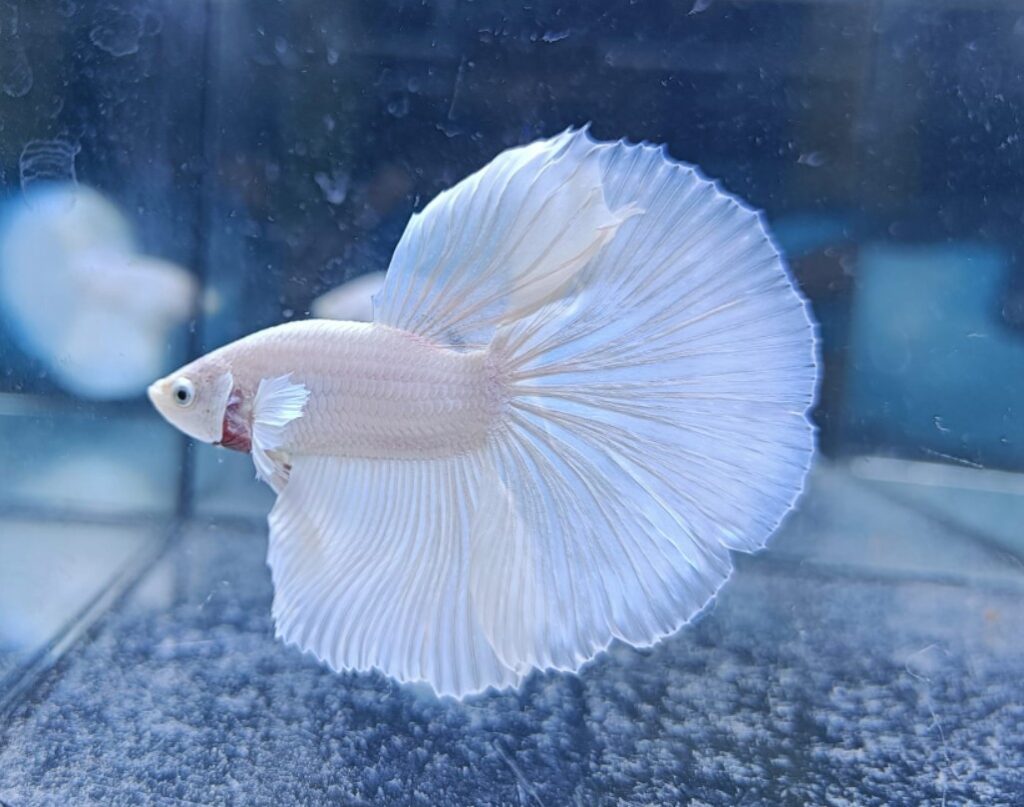
Halfmoons are easy to spot. The first thing you’d notice is their eye-catching and dramatic tail that forms a perfect semicircle when fully flared at 180 degrees. Apart from the Halfmoon Betta tail characteristics, there are other features to recognize Halfmoon Bettas.
Color Pattern
Halfmoons come in a variety of striking color patterns. These patterns may be:
- Solid: Single, bold color
- Marble: Swirling patterns that change over time
- Butterfly: Fins split into different color zones
- Multicolor: A little bit of everything
These variations make identifying Halfmoon Betta fish fun because there’s always a new color combo to admire.
Unique Traits

Apart from the dramatic tails, Betta splendens fin types are useful in their identification. Halfmoon Bettas have long, flowing fins that trail behind them like royal robes. Often, they have matching or contrasting anal and dorsal fins that enhance their symmetrical shape.
Setting Up the Ideal Tank for a Betta Halfmoon
You’ve probably heard the popular myth that Bettas Halfmoons are kept in bowls and tiny containers. You need more than a cup of water to show off your Halfmoon’s beauty and keep it healthy. Halfmoons thrive in well-designed, heated aquariums.
With this guide, you’ll learn how to design an ideal setup and basic aquarium needs for Betta splendens.
Author’s Note: Check out our post on Innovative Betta Fish Tank Designs to Inspire Your Next Aquarium Setup for fun and unique Betta tank ideas!
Tank Size
For your Betta Halfmoon tank setup, use a minimum of 5 gallons to give your fish enough room to swim, flare and explore.
Water Conditions
Keep the temperature steady between 76°F and 80°F, and perform partial water changes weekly. Use a low-flow filter to keep the tank water clean and calm.
| Parameter | Ideal Range | Notes |
|---|---|---|
| pH Level | 6.5 – 7.5 | Slightly acidic to neutral is best. Sudden pH swings should be avoided. |
| Ammonia | 0 ppm | Toxic even at low levels; must be zero at all times. |
| Nitrite | 0 ppm | Also highly toxic; should always be zero. |
| Nitrate | < 20 ppm | Safe in low amounts; regular water changes help control it. |
| Water Hardness (GH) | 3 – 4 dGH (50 – 70 ppm) | Moderately soft water is ideal. |
| Carbonate Hardness (KH) | 3 – 5 dKH (53 – 90 ppm) | Helps buffer pH and maintain stability. |
| Tank Size | Minimum 5 gallons | Larger tanks are easier to manage and better for Betta health. |
| Filtration | Gentle flow | Bettas prefer still or slow-moving water; use baffled or adjustable filters. |
| Water Change Frequency | 25–30% weekly | Helps maintain water quality and reduce toxin buildup. |
Be sure to use a Master Test Kit to routinely test your tank’s water quality then make adjustments as needed.
Author’s Note: Check out our post on The 7 Quietest Aquarium Filters for a comprehensive guide on choosing the right filtration system!
Aquascape Tips
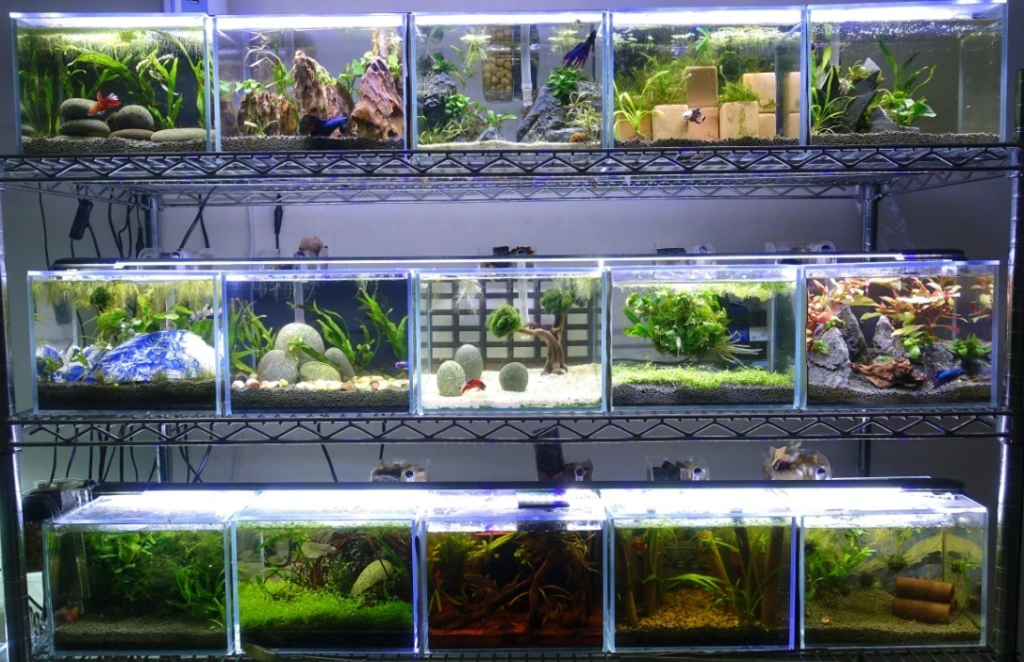
Your Halfmoon’s fins are delicate and prone to tearing, so you need to avoid sharp objects. Some good fin-safe tank decoration ideas for your Betta Halfmoon tanks are:
- Smooth rocks or driftwood
- Live plants like Anubias
- Indian almond leaves for tannins and shelter.
For more ideas on what Bettas like in their tank check this post out.
Dietary Needs for Vibrant Colors and Healthy Fins

Found On Amazon
Feeding your Betta Halfmoon isn’t just about keeping it full, it’s about enhancing its color and keeping its fins in great shape. These Betta Halfmoon feeding tips will teach you how to do just that.
Feeding Schedule
Feed small portions 5 – 6 times per week, and split into one or two feedings daily.
Diet Suggestions
Betta Halfmoons follow a solid carnivorous Betta diet plan. Here are some high-protein and carnivorous foods to enhance Betta colors.
- Betta-specific pellets with color-enhancing nutrients
- Frozen brine shrimp or daphnia
- Live mosquito larvae as a treat.
Author’s Note: For more on feeding your aquatic pets check out The Ultimate Guide to Fish Food: Pros and Cons & Best Choices!
Temperament and Compatibility with Other Fish

Halfmoons are stunning, but also feisty. Males are territorial and semi-aggressive, especially with other males or anything that looks like competition.
Although Halfmoon Bettas prefer to live alone, you can still add some tank mates. Betta fish community setups are better planned and designed when you know your Halfmoon’s compatible neighbors and enemies.
Compatible Species
Ideal Halfmoon Betta tank mates are small, calm, and non-fin-nipping. Some peaceful fish for Betta tanks are Corydoras catfish, Kuhli loaches, and Ember tetras.
Author’s Note: For more on Betta tankmates checkout The 13 Popular Betta Tankmates for a 5 Gallon Aquarium!
Species to Avoid
Don’t keep your Betta Halfmoon with other male Bettas, Tiger Barbs, or fin nippers.
Make sure that there’s enough personal space for each fish in the tank. Always monitor and be ready to rehome if things don’t work out.
Breeding Halfmoon Bettas: Challenges and Rewards
Breeding Halfmoon Betta is beautiful, but not for the faint of heart. It takes prep, patience, and a backup plan. This Betta splendens reproduction guide can help you.
Breeding Setup
Use a separate tank of 5–10 gallons with shallow and warm water, low filtration, and live foods to condition both male and female.
Once the pair spawns under a bubble nest, the male takes over fry care. The female must be removed right after spawning.
Challenges
You may observe aggressive behaviours between the pairs. There’s also a risk of tail and fin damage during courtship. Gentle Halfmoon Betta fry care is important if you’re raising fry.
Common Health Problems and Prevention

Those gorgeous fins come with a catch: they’re fragile and prone to health issues, especially in less-than-ideal water conditions. Fin care for Halfmoon Bettas is one thing you want to take seriously because those tails don’t heal fast if torn.
Common Diseases
Some common diseases that affect Betta Halfmoons are fin rot, ich, velvet, and swim bladder issues. They are often caused by stress, dirty water, or an improper diet.
Preventive Care
Stay on top of these Betta Halfmoon health guide tips:
- Keep water parameters steady
- Feed a high-protein diet
- Quarantine new additions
Consistent care is your best defense when it comes to preventing Betta fish diseases.
Lifespan and Long-Term Care Commitment

Want to extend your Betta splendens lifespan? With proper long-term Halfmoon Betta care, your healthy Halfmoon Betta can live 3 to 5 years
Growth Info
They usually reach full size around 6 months of age, with full fin development showing around the same time.
Long-Term Tips
Keep your Halfmoon engaged and healthy with:
- Live plants
- Gentle current
- A varied, nutritious diet
The secret to improving Betta fish quality of life is creating a consistent, enriching environment.
Conclusion: A Living Work of Art for Passionate Aquarists
The Betta Halfmoon is a top-tier ornamental Betta fish selection. With its flowing fins, vibrant color patterns, and bold energy, it’s no surprise that it remains a favorite in the world of ornamental fish.
But like any living work of art, providing proper care for Betta splendens is a must!
If you want to add a splash of elegance to your tank, this fish is perfect for you. Use this Halfmoon Betta care guide right here as your starting point for a mind-blowing experience, and let’s hear about your experience in the comment box below.






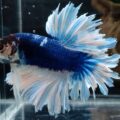

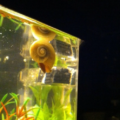


1 thought on “Betta Halfmoon (Betta splendens): The Dazzling Star of Freshwater Aquariums”